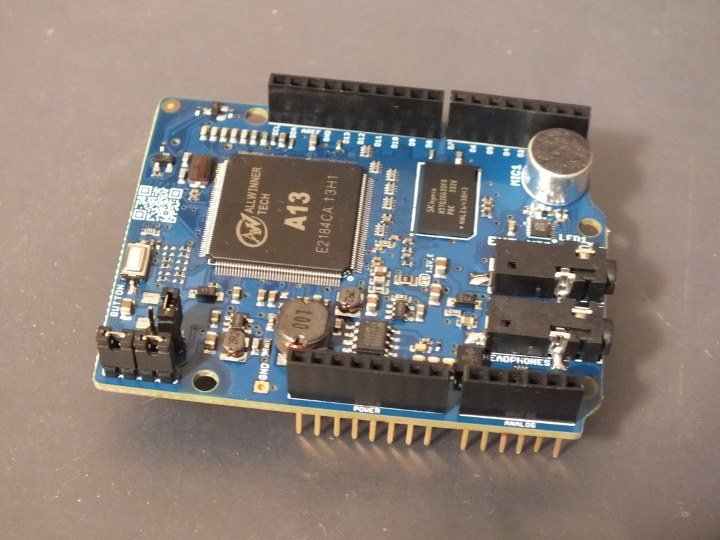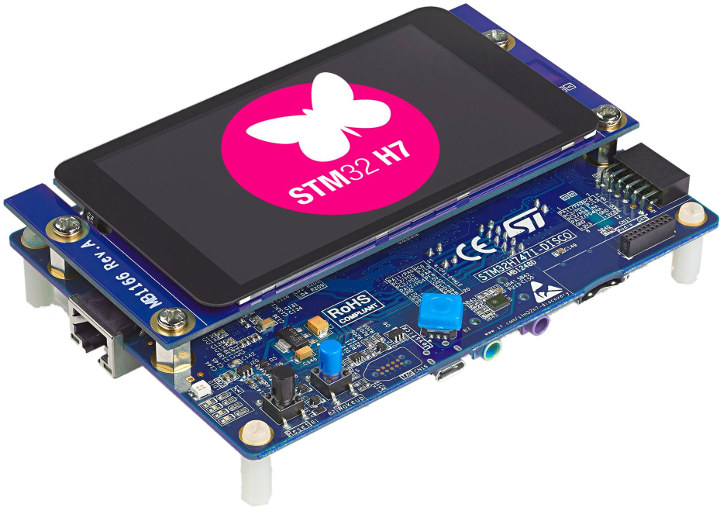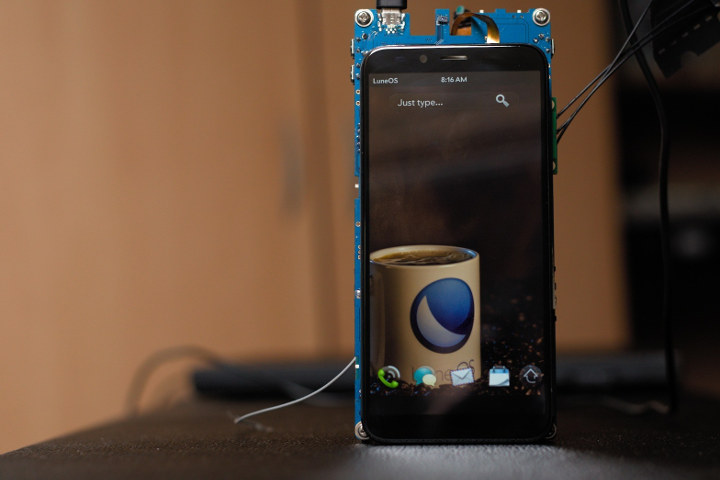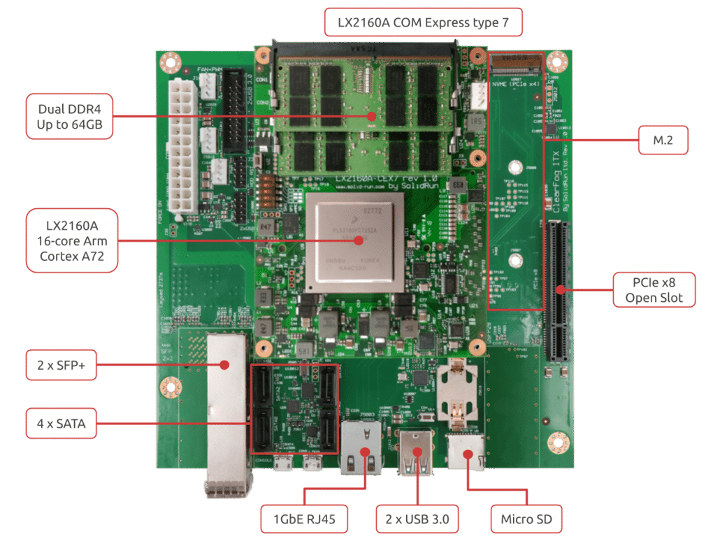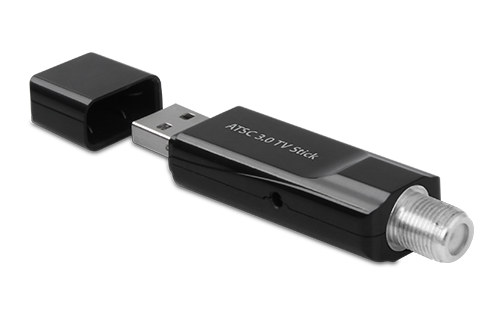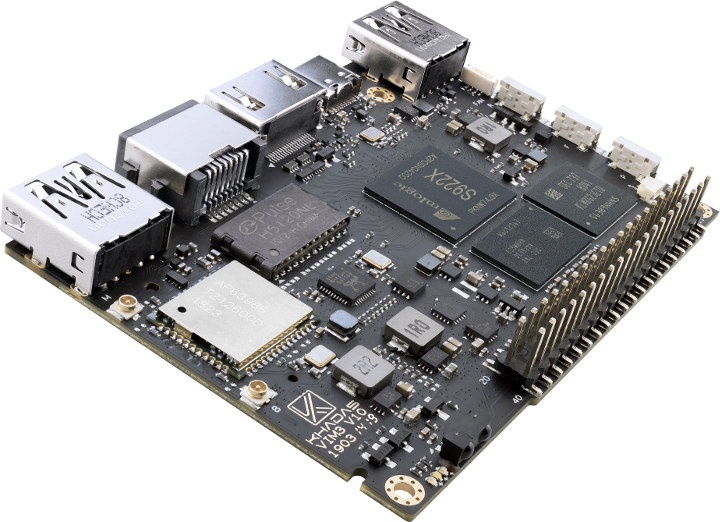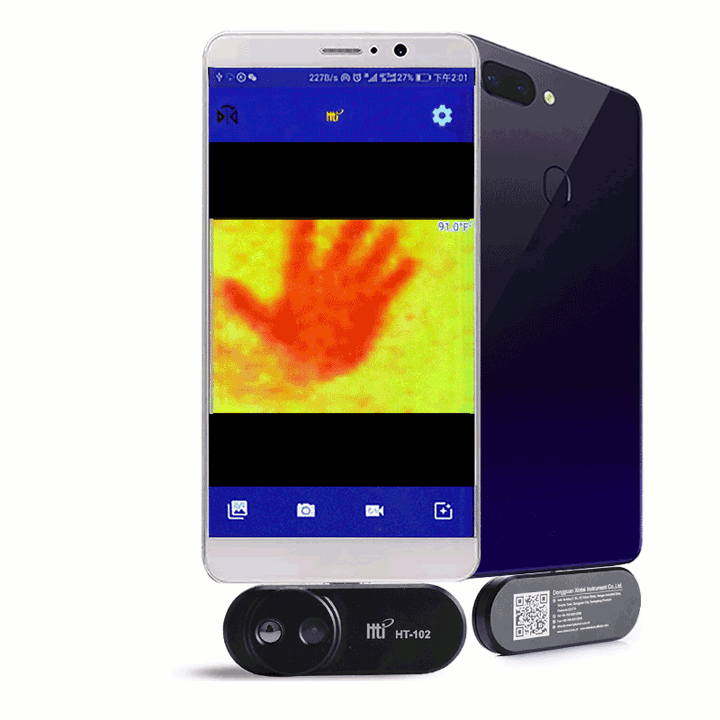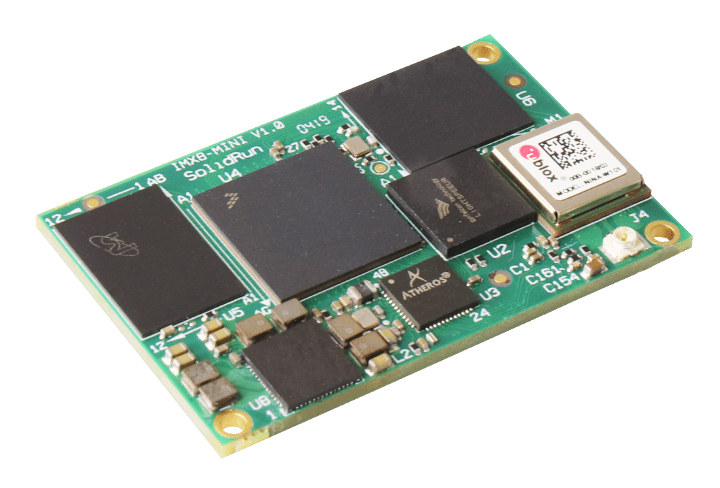Smart speakers normally work both offline and online, but their offline ability is usually limited to just one or two wake words, that when detected let the speakers listen to speech that it will send the cloud for further processing. It’s done that way because the speakers would not have enough resources, e.g. processing power, storage to contain the whole data required for natural speech processing, and wake words reduce the number of requests to the cloud, and improve privacy. But in some cases, you may not need the full language, and instead would like to use several voice commands to control a device without the need or the ability to connect to the Internet/Cloud. So Audeme has designed an Allwinner A13 based Arduino shield named MOVI (My Own Voice Interface), and that can recognize and/or synthesize up to 150 full sentences of your choice in English, Spanish or German. […]
STMicro adds Dual-core Cortex-M7/M4 Microcontrollers to STM32H7 Family
STM32H7 is the high-performance family of STMicroelectronics Arm Cortex-M7 microcontroller. So far all STM32H7 MCUs had a single core, but the company has now added dual-core devices (STM32H74x/75x) comprised of an Arm Cortex-M7 core clocked at up to 480 MHz and a Cortex-M4 core clocked at 240MHz. In some way, this part is the little brother of STM32MP1 Arm Cortex-A7 + Cortex-M4 processor, as the new dual-core MCU also targets current products upgrade with the Arm Cortex-M4 core running legacy code, and the more powerful Cortex-M7 aimed at new features such as more sophisticated graphical interfaces, or offloading intensive workloads such as neural networks, checksums, DSP filtering, or audio codecs. Highlights of the new STM32H7 dual-core microcontrollers: Cores Arm Cortex-M7 at 480 MHz Arm Cortex-M4 at 240 MHz 3224 CoreMark / 1327 DMIPS Up to 2MByte Flash and 1Mbyte SRAM on-chip Dual-Bank Flash for seamless firmware updates “New” features MIPI […]
Software Development on Librem 5 and PinePhone Linux Phones is Progressing Nicely
Several Linux phones are expected this year including Purism Librem 5 and Pine64 PinePhone. Both companies have sent phone development kits out to developers a few months ago, and we are starting to see some nice progress for both phones. What made me write this post is an update from Purism comparing the boot time on Librem 5 running PureOS Linux distribution without specific optimizations yet, and HTC One Android smartphone. Librem 5 smartphone devkit takes 13 seconds to get to the lockscreen, while the Android phone takes over 40 seconds. Fair enough, most people won’t boot their phone often, but it still nice to know it won’t take long to turn on the phone from power off state. They also posted a progress report at the end of May saying calls are now working with better audio quality, fixed various issue with messaging in Chatty, work on Linux […]
Pre-production HoneyComb LX2K 16-Core Mini ITX Arm Workstation is up for pre-order for $550
A few months ago, we wrote that SolidRun was working on ClearFog ITX workstation with an NXP LX2160A 16-core Arm Cortex-A72 processor, support for up to 64GB RAM, and a motherboard following the mini-ITX form factor that would make it an ideal platform as an Arm developer platform. Since then the company split the project into two parts: the ClearFog CX LX2K mini-ITX board will focus on networking application, while HoneyComb LX2K has had some of the networking stripped to keep the cost in check for developers planning to use the mini-ITX board as an Arm workstation. Both boards use the exact same LX2160A COM Express module. HoneyComb LX2K specifications: COM Module – CEx7 LX2160A COM Express module with NXP LX2160A 16-core Arm Cortex A72 processor @ 2.2 GHz (2.0 GHz for pre-production developer board) System Memory – Up to 64GB DDR4 dual-channel memory up to 3200 Mpts via SO-DIMM […]
Geniatech A683 is an ATSC 3.0 USB TV Tuner
ATSC (Advanced Television Systems Committee) is the standard used in North American, and some other countries around the world such as South Korea, for digital terrestrial television that allows you to receive free-to-air or paid channels over an indoor or outdoor antenna. ATSC 3.0 is the very latest version of the standard with new features including “H.265/HEVC for video channels of up to 2160p 4K resolution at 120 frames per second, wide color gamut, high dynamic range, Dolby AC-4 and MPEG-H 3D Audio, datacasting capabilities, and more robust mobile television support” (Source: Wikipedia). The first deployments occurred in South Korea in May 2017, but it’s unclear where the US is at the moment, and it seems there were some broadcast tests in 2018, but not full deployments. Nevertheless, if you want to watch or record programs in ATSC 3.0 channels, you’ll need new hardware, and currently most TVs won’t ship […]
Khadas VIM3 Development Board to Launch for $69.99 and Up on June 24
After ODROID-N2, Khadas VIM3 is the second Amlogic S922X powered development board to become available to the maker community. However, while the former have been available for a couple of month, we only knew most of Khadas VIM3 specifications so far. Shenzhen Wesion has now announced a launch date and pricing for the board, and as well as released a few more details. Khadas VIM3 Basic and Pro will start selling on June 24 for respectively $69.99 with 2GB RAM and 16GB flash, and $99.99 with 4GB RAM and 32GB flash. Those prices are very attractive, and competitive against ODROID-N2 due to the extra features like built-in flash. The downside is that those are introductory prices that will be effective for the first production batch and until July 22, 2019 only, after which prices will increase. The company also provided a comparison table showing the main difference between their earlier […]
HT-102 is a $130 Thermal Camera for Android Phones
Thermal cameras are useful to accurately monitor the temperature of electronics components, people, fires, houses, and so on. Thermal imaging cameras can be relatively expensive and one way to lower the cost and make sharing of results easier is to get a model that connects to your smartphone. The ones listed on Amazon cost $200 and up, but you’ll find HT-102 thermal camera for Android phones on Chinese websites such as GearBest or Banggood for around $130. HT-102 specifications: Material: metal Capture Temperature Range – -20 to 300°C Accuracy – ±3℃ or ±5% of reading Resolution – 0.1℃ or 0.1℉ Working band – 8-14μm Horizontal viewing angle / vertical viewing angle – 43°±1°/ 43°±1° Infrared image resolution – 32 x 32 Visible image resolution – 640 x 480 Phone I/F – USB type-C port for data and power Dimensions – 60 x 30 mm Weight – 19 grams Temperature Range […]
SolidRun i.MX 8M Mini SoM Includes Gyrfalcon Lightspeeur 2803S AI Accelerator
There are already plenty of NXP i.MX 8M Mini boards and system-on-modules, but so far none of those included a neural network accelerator. But that’s now an option as SolidRun and Gyrfalcon teamed up to design SolidRun i.MX 8M Mini system-on-module that combines NXP i.MX 8M Mini processor with Gyrfalcon Lightspeeur 2803S NPU (Neural Processing Unit) in order to speed up AI workloads at the edge. SolidRun i.MX 8M Mini SoM Specifications: SoC (one or the other) NXP i.MX8M Mini S single core Arm Cortex-A53 processor up to 1.8 GHz, Arm Cortex-M4 core up to 400MHz, GC NanoUltra 3D GPU + GC320 2D GPU NXP i.MX8M Mini D dual-core Arm Cortex-A53 processor up to 1.8 GHz, Arm Cortex-M4 core up to 400MHz, GC NanoUltra 3D GPU + GC320 2D GPU NXP i.MX8M Mini Q quad-core Arm Cortex-A53 processor up to 1.8 GHz, Arm Cortex-M4 core up to 400MHz, GC NanoUltra […]


